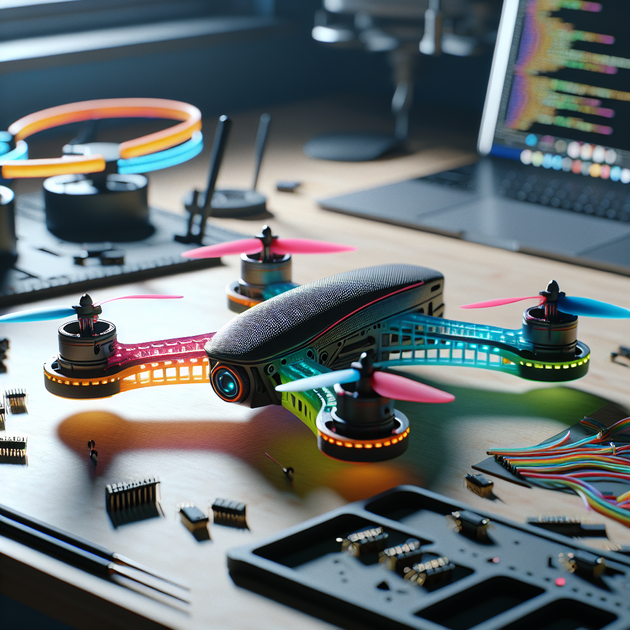What if you could print your own modular drone at home—and tweak every part to suit your needs? That’s exactly what I’m doing with my open-source project in progress called Open Copter. This isn’t just any 3D-printed drone; it’s designed to be completely customizable and upgradable by anyone with access to a printer and a bit of curiosity.
Why Build a 3D-Printed Drone?
Let’s face it: most drones out there are either too expensive or locked down with proprietary parts. The idea behind a truly open-source and 3D-printed drone is simple—let makers and hobbyists take control. With Open Copter, everything from the frame to the electronics is designed to be tweaked or swapped out.
The main frame is printed in flexible PLA filament. Why flexible PLA? It offers the best of both worlds—strength (so your drone won’t shatter on a hard landing) and enough flexibility to absorb impacts. The empty frame weighs around 300 grams and has a diagonal size of about 460 mm (that’s medium-sized but roomy enough for upgrades).
Open Copter Hardware: What Makes It Tick
The real magic of this 3D-printed drone is in its hardware choices. All electronics are easy to source and chosen for reliability without costing an arm and a leg:
- Transmitter: Powered by an ATmega32u4 microcontroller (think Arduino Leonardo class), so programming and updates are simple.
- Wireless Link: Uses nRF24L01 transceivers—cheap but robust modules that make wireless control snappy.
- Display: A compact 128×64 OLED screen shows channel data in real time (and lets you configure settings directly from the controller).
- Frame Material: Flexible PLA—almost unbreakable compared to brittle standard PLA.
- Weight: Empty frame is just 300 g (lightweight but strong enough for serious flying).
- Size: Diagonal span of about 460 mm—ideal balance between portability and stability.
Everything about this hardware setup aims for ease of access. If you want to swap out components or upgrade something later on (like adding FPV gear), it’s all possible.
The Software Side: C++ Power Under the Hood
No fancy proprietary firmware here—the brains running both transmitter and receiver are written in C++. This means anyone can fork the code on GitHub (repo name: Open Copter), add new features, tweak flight behavior, or simply learn how drones operate at a low level.
One feature I’m working on right now is making channel assignment super easy via the OLED display—no need to plug into a computer just to re-map your controls. That little screen does more than look cool; it actually makes configuration out in the field much smoother.
If you’re interested in digging into the code or contributing ideas, everything lives openly on GitHub under “Open Copter.” Pull requests are welcome—I love seeing what other makers come up with!
An Anecdote From My Workbench
I’ll never forget one of my first test flights with an early prototype of this 3D-printed drone. After spending hours assembling the frame from bright orange flexible PLA (not my most stealthy color choice), I accidentally clipped a tree branch during takeoff. Instead of snapping apart like my old brittle frames used to do, this one bounced off the ground…then flew again after just brushing off some dirt! That moment really convinced me that flexible PLA was worth every penny—and made me double down on making every piece as swappable as possible.
Ready To Try Building Your Own?
If you’ve always wanted a customizable flying machine—or just love building things from scratch—a fully 3D-printed drone like Open Copter could be your next weekend project. The combination of modular hardware design and hackable software makes it perfect for tinkerers who hate being boxed in by closed systems.
You can check out all the files (STLs for printing, firmware source code) over at the Reddit post here, which links directly to the GitHub repo too.
So what would you change or add if you could build every part of your own drone? Let me know your wildest ideas—and maybe we’ll see them fly soon!

Leave a Reply